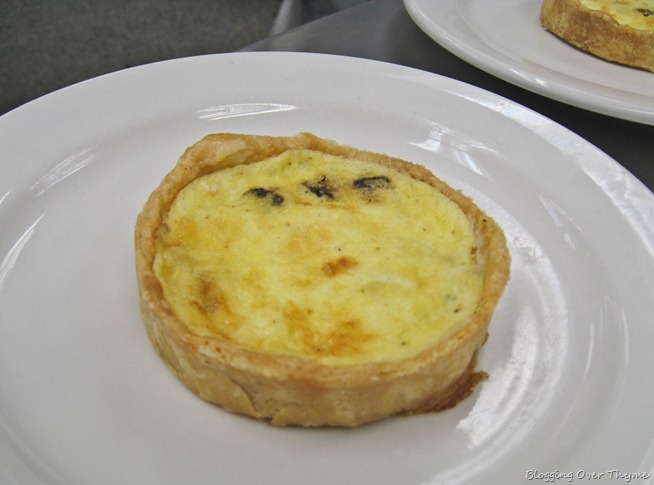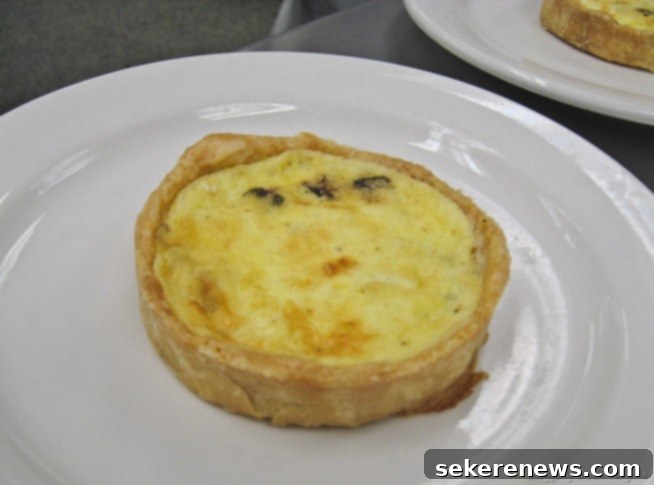A Culinary Day: Mastering Classic French Techniques with Marjolaine Cake, Chicken Roulade, and Pommes Duchesse
Every day in culinary school brings a new set of challenges, a deeper dive into the world of professional cooking, and the opportunity to master timeless techniques. Today was no exception, a whirlwind of sweet and savory creations that truly tested our skills and expanded our understanding of classic French cuisine. Despite the fast pace, the satisfaction of seeing these intricate dishes come to life was immeasurable, culminating in a menu that was as educational as it was delicious.

The Sweet Symphony: Crafting the Exquisite Marjolaine Cake
Undoubtedly, the highlight of our culinary day was the dessert, a true masterpiece of French patisserie: the classic Marjolaine cake. This iconic dessert is a testament to the elegant complexity that French baking embodies. At its heart, the Marjolaine is a dacquoise cake, a delicate and flavorful base made from a mixture of French meringue and finely ground nuts. In our preparation, we utilized almond flour, which lent a wonderfully subtle nuttiness and a tender, slightly chewy texture to the meringue layers.
What truly elevates the Marjolaine cake are its alternating, luxurious fillings. We meticulously layered rich ganache, a velvety hazelnut cream, and a smooth, aromatic vanilla cream. Each layer contributed a distinct flavor and texture, creating a harmonious balance that was simply divine. The hazelnut cream, in particular, stood out with its incredibly noticeable and authentic flavor, which I absolutely adored. The cake was beautifully finished with a dusting of powdered sugar and garnished with delicately sliced, toasted almonds, adding a touch of elegance and a complementary crunch.
This Marjolaine cake was more than just good; it was incredibly moist, rich, and perfectly balanced in sweetness. It has, without a doubt, earned its place as my favorite dessert created so far in Phase I of our culinary program. Its complex yet refined flavor profile and stunning presentation have left a lasting impression, and I am already positive that I will be recreating this magnificent cake again in the future. Mastering such a classic truly felt like a milestone.

A Savory Start: The Enduring Charm of Quiche Lorraine
Our appetizer for the day brought a welcome revisit to a foundational French dish: the timeless Quiche Lorraine. This classic tart, originating from the Lorraine region of France, is a staple in French culinary arts and a dish that every aspiring chef must master. It features a crisp, buttery pâte brisée crust, generously filled with a rich, savory custard, studded with grated Gruyère cheese and savory bacon lardons.
Making Quiche Lorraine again allowed us to refine our pâte brisée technique, ensuring a perfectly flaky and tender crust that cradles the creamy filling. The combination of salty bacon, nutty Gruyère, and the silky, egg-based custard creates a wonderfully comforting and sophisticated appetizer. The simplicity of its ingredients belies the depth of flavor it achieves. Given its status as a quintessential French dish and its emphasis on fundamental pastry and custard-making skills, there’s a strong possibility that this very dish might make an appearance on our upcoming exam this Thursday. It’s an excellent test of basic proficiency and attention to detail.

The Main Event: An Educational Exploration with Chicken Roulade and Mousse
For our main course, we embarked on a technically demanding dish: a chicken roulade. This preparation involved tenderized chicken breasts, carefully filled with a flavorful medley of roasted red pepper, sautéed spinach, and a delicate chicken mousse. While the concept of stuffing chicken with chicken might sound a tad unconventional or even redundant to some (and I’ll admit, I was right there with that thought!), our Chef explained its purpose in culinary education. This particular rendition, while perhaps not standard for most restaurant menus, was designed to immerse us in a multitude of advanced techniques, requiring precision and skill at every step.
The Intricacies of Chicken Mousse and Roulade Techniques
A key difference in today’s chicken mousse was its preparation using chicken leg meat rather than breast. This seemingly minor change introduced a significantly more time-consuming process, as leg meat requires more careful preparation to achieve the desired smooth, emulsified texture for the mousse. The goal was to create a light, airy filling that would enhance the texture of the overall roulade without overpowering it.
The journey of creating the chicken roulade began with tenderizing the chicken breasts to create a uniform canvas. Next, the roasted peppers, sautéed spinach, and chicken mousse were meticulously layered onto the chicken. The art then lay in the rolling: we carefully rolled the stuffed chicken breasts very tightly in plastic wrap, twisting the ends to form a compact, sausage-like cylinder. This tight wrapping is crucial for maintaining the roulade’s shape during cooking.
To cook the roulade, we gently poked the plastic wrap a few times with a knife to allow for steam release, then poached it in barely simmering water until it was perfectly set. This gentle poaching method ensures even cooking and keeps the chicken incredibly moist. Following the poaching, the roulade was unwrapped and pan-seared in a sauté pan to develop a beautiful golden-brown color and finish the cooking process, adding a desirable crispness to the exterior. Unlike some of our previous chicken mousse dishes, where the mousse could sometimes be quite prominent, this particular preparation was far more subtle; the mousse almost disappeared into the chicken, enhancing its texture without overtly announcing its presence. Once sliced, it presented a beautiful, layered cross-section, showcasing the vibrant fillings.


We served the elegant chicken roulade with a simple yet flavorful, thin jus. This classic sauce was crafted from scratch using roasted chicken bones, aromatic mirepoix (a foundational blend of carrots, celery, and onions), and rich chicken stock. The jus provided a perfect, light accompaniment that complemented the chicken without overpowering its delicate flavors.
The Art of Accompaniment: Pommes Duchesse and Glazed Turnips
Alongside our main course, we prepared another delightful potato dish that added both flavor and visual appeal: pommes duchesse. This new technique introduced us to an elegant and decorative way to serve potatoes, moving beyond simple mashed or roasted preparations. Pommes Duchesse are essentially cooked potatoes, meticulously riced to ensure a perfectly smooth texture, and then combined with a small amount of whole egg and an extra yolk, along with precise seasoning and a touch of butter. This rich mixture is then piped into charming little rosettes, which are then chilled to help them hold their shape, and finally baked in the oven until golden and slightly crisp on the edges. They are incredibly pretty and add a touch of sophistication to any plate. The piping process, in particular, brought back fond memories of frosting countless cupcakes back in the day, showcasing how fundamental skills can translate across different culinary disciplines.

Mastering Vegetable Preparation: Glazed Tourneed Turnips
To complete our main course plating, we also made simple yet refined glazed (tourneed) turnips. The technique of ‘tourneeing’ vegetables, which involves shaping them into uniform, barrel-like forms, is a cornerstone of classic French culinary aesthetics and ensures even cooking. We’ve applied this method to many other vegetables throughout our program, such as potatoes and carrots, and it’s becoming a familiar but still challenging skill.
The glazing process itself is a familiar one by now: the tourneed turnips are added to a pan with a small amount of butter, seasoned with salt and pepper, and covered with a very thin layer of chicken stock. A parchment paper lid (or “cartouche”) is then placed directly on top, and the vegetables are cooked over very low heat. This gentle cooking method allows the turnips to become tender while slowly absorbing almost all the liquid, resulting in a beautiful, glossy glaze that enhances their natural sweetness.
While the glazing process has become a routine for us, the tourneeing itself can still be quite time-consuming. However, with practice, it has become exponentially easier and more precise. Although you only see a small portion in the picture below, rest assured, I painstakingly tourneed many more than that – a true exercise in patience and precision!

Reflecting on a Day of Culinary Growth and Anticipation
And that, in essence, sums up today’s incredibly rich and diverse menu! While the pictures might only capture a snapshot of the final dishes, the reality of the day in the kitchen was one of relentless activity, requiring constant focus and quick execution. It was definitely a fast-paced, hectic day, but one that was undeniably rewarding and produced some truly tasty results. Each dish, from the intricate Marjolaine cake to the technically demanding chicken roulade and the elegantly prepared pommes duchesse, offered invaluable lessons in both precision and artistry.
As we head into our upcoming exam this Thursday, the pressure to recall and perfectly execute these techniques is mounting. I don’t even want to fully contemplate what next week, the beginning of Phase II, will bring. The thought is both exciting and a little daunting – yikes! It undoubtedly means more advanced techniques, new ingredients, and even greater challenges.
There’s certainly a lot more studying and practicing to do before Thursday’s big exam. Make sure to look out for another update this weekend, where I’ll share more about our progress and perhaps some thoughts on the exam itself. Every day is a step closer to mastering the rich traditions of French culinary arts, and each dish is a lesson learned and a skill refined.
